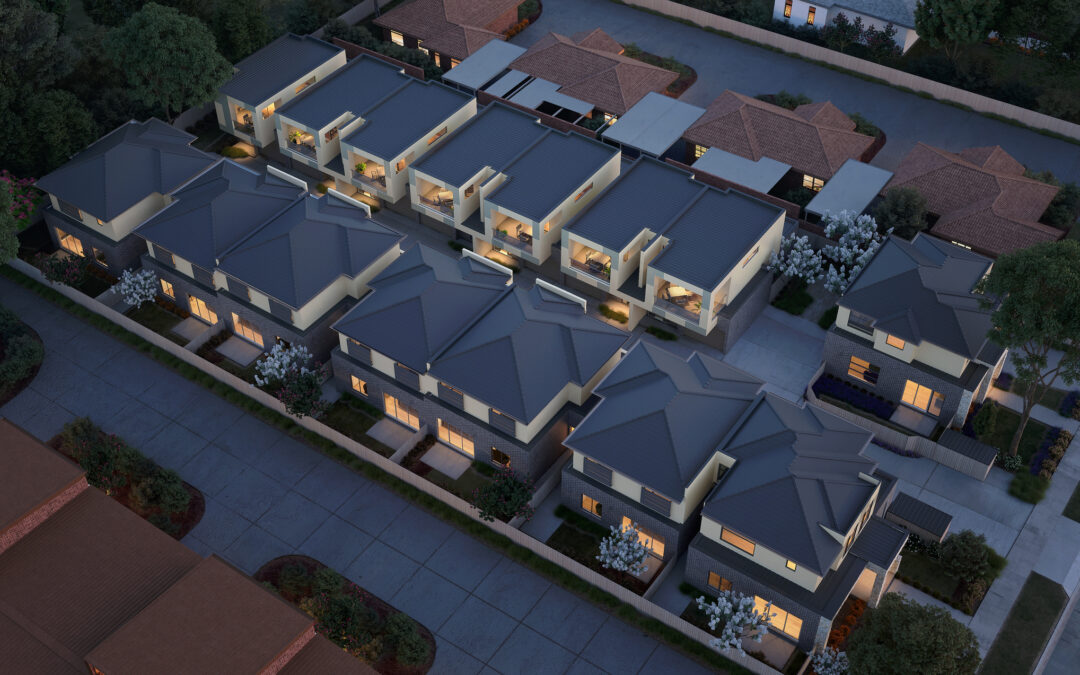Land area of properties sold is decreasing, Buyer search patterns fit this trend Reflect changes in economic, demographic and planning factors past ten years.
New data from PropTrack shows the median lot size of homes sold nationally has been trending downward since 2015.
In 2015, the typical house transacted was 670 square meters. This number has declined steadily over time, with the median land size of houses falling to 645 square meters last year.
This decline may be the result of new homes being built on smaller blocks, a result of a number of factors.
Population growth is one of the key drivers. According to the Australian Bureau of Statistics, Australia’s population has grown by 15% since 2015. It is expected to grow by another 16% over the next decade.
An increase in population naturally increases demand for housing, particularly in metropolitan areas where most Australians live. As land supply is constrained by geographical boundaries, planning and zoning restrictions, land costs and ultimately housing costs tend to rise.
To keep prices within reach for Australians, many new homes Land area reduced.
Neighborhood sizes continue to shrink to maintain affordability and maximize land use. Image: Getty
The state government has also implemented a number of zoning reforms in recent years to encourage “infill” in suburbs close to transport and amenities. This includes increasing the floor space of low- and mid-rise housing. As a result, more townhouse and duplex projects have emerged, often in smaller subdivision neighborhoods to maximize the use of land in these areas.
These changes have resulted in house sizes falling faster in capital cities than in regional areas.
The decline in lot size creates interesting parallels in buyer behavior, with buyers adjusting expectations to accommodate the decrease in land size.
Buyers are looking for properties in smaller neighborhoods
In 2020, the most searched property type was a 600 m² house with four bedrooms and two bathrooms. The second most searched house was a house with four bedrooms and two bathrooms on 500 square meters, followed by a house with three bedrooms and two bathrooms on 500 square meters.
Buyer search preferences have changed from 2021, with the most popular land sizes and configurations consistently being 500 sqm, four bedroom, two bathroom homes. The larger 600 sqm plot has since dropped out of the top three, replaced by the smaller 400 sqm plot with four bedrooms and two bathrooms, which will become increasingly popular in 2024 and 2025.
While changes in search volumes may be partly influenced by the availability of properties on the market, declining affordability in larger suburbs is another possible driver, particularly in capital cities.
As fewer new homes are built on larger blocks, the supply of existing homes remains broadly unchanged. Larger homes tend to cost more.
Faced with affordability pressures, buyers are turning to homes in smaller neighbourhoods, leading to increased demand for these properties.
Although land size has declined over the years, an important detail to highlight is that the size of new homes has remained fairly stable.
House sizes remain stable despite downward trend in land area
At present, the average floor area of new residential buildings nationwide is 241 square meters. Over the past ten years, the internal area of the houses has been between 230 and 240 square meters.
This is also evident at the state level, with new homes showing little change since 2015 in most states and in some cases house sizes increasing.
Despite the shift in recent years from private backyards to shared public and green spaces, interior living space remains a priority for buyers and developers focused on maximizing land use.
What housing will look like in the next ten years
The makeup of our cities is likely to grow further over the next decade with an increase in semi-detached and attached homes (townhouses and apartments), supported by planning and zoning reforms. As land becomes more scarce and more expensive, block sizes for single-family homes (houses) are expected to continue their downward trend.
As homes on smaller blocks become more common and make up a larger proportion of properties on the market, buyer preferences are likely to shift more towards compact lots.
Despite this, we expect house sizes to remain relatively unchanged over the next few years as Australians continue to value spacious internal living spaces.

 1005 Alcyon Dr Bellmawr NJ 08031
1005 Alcyon Dr Bellmawr NJ 08031
